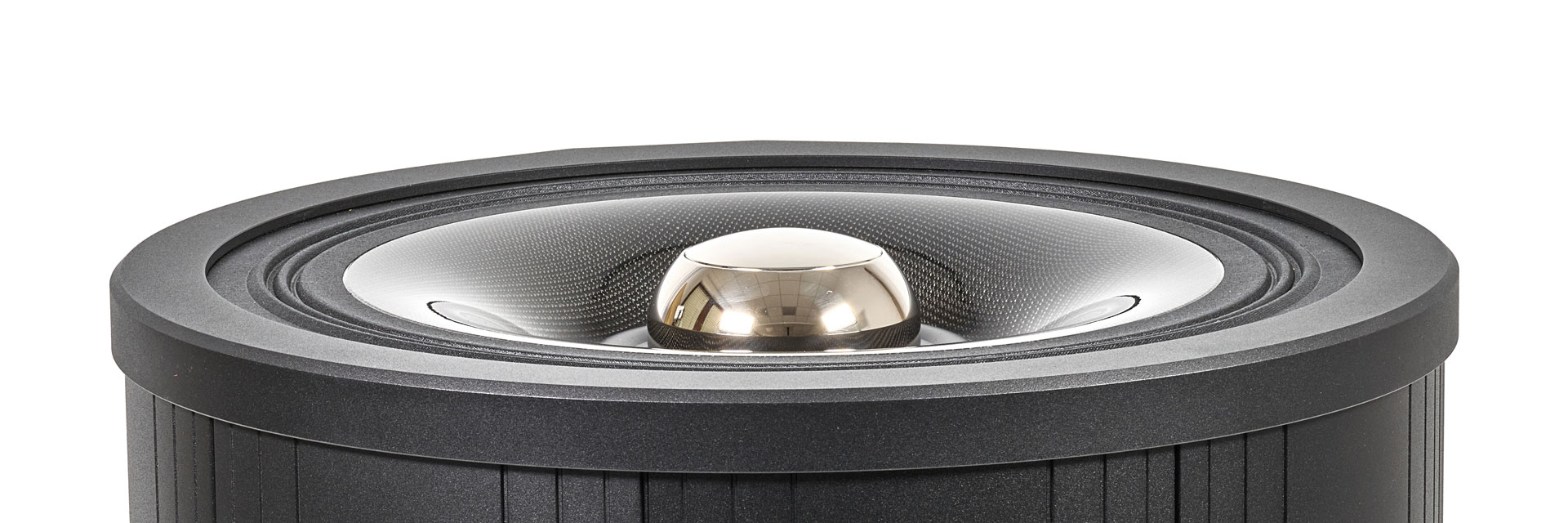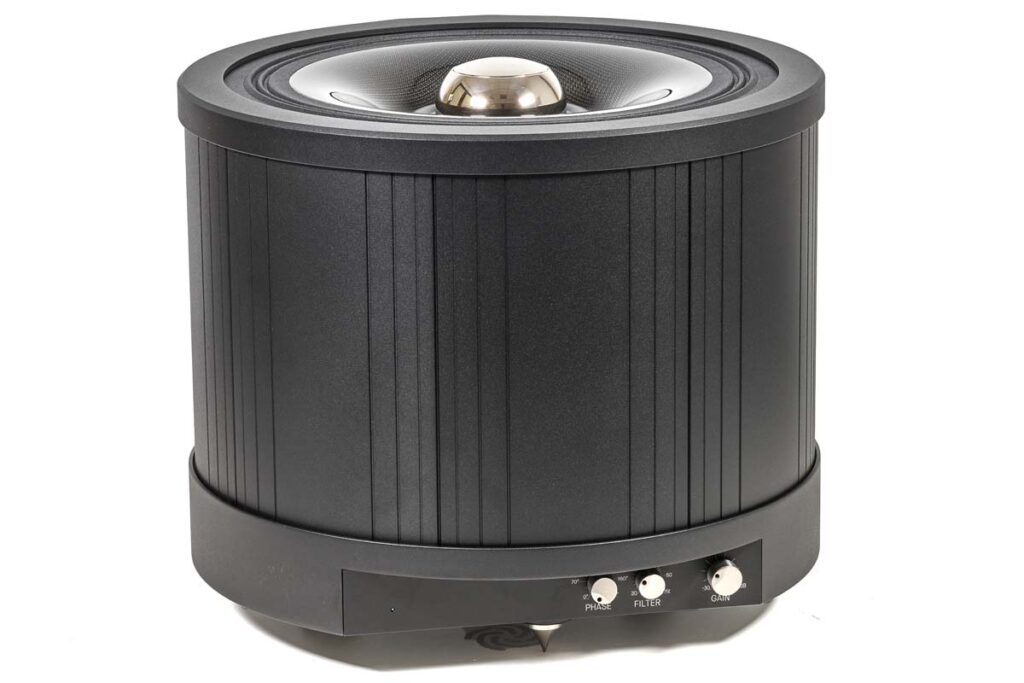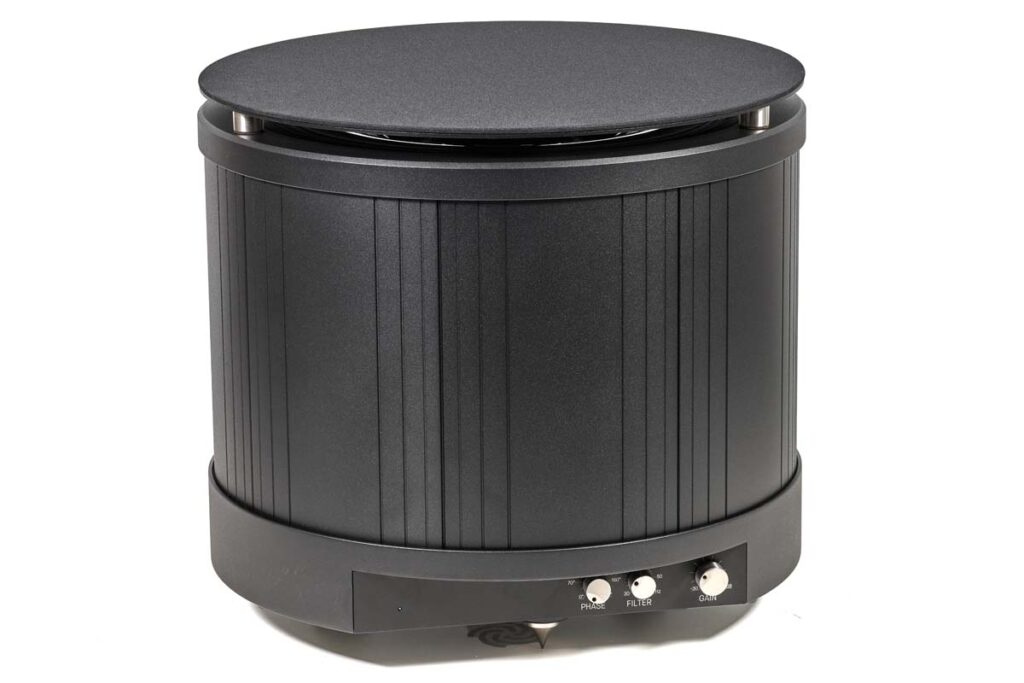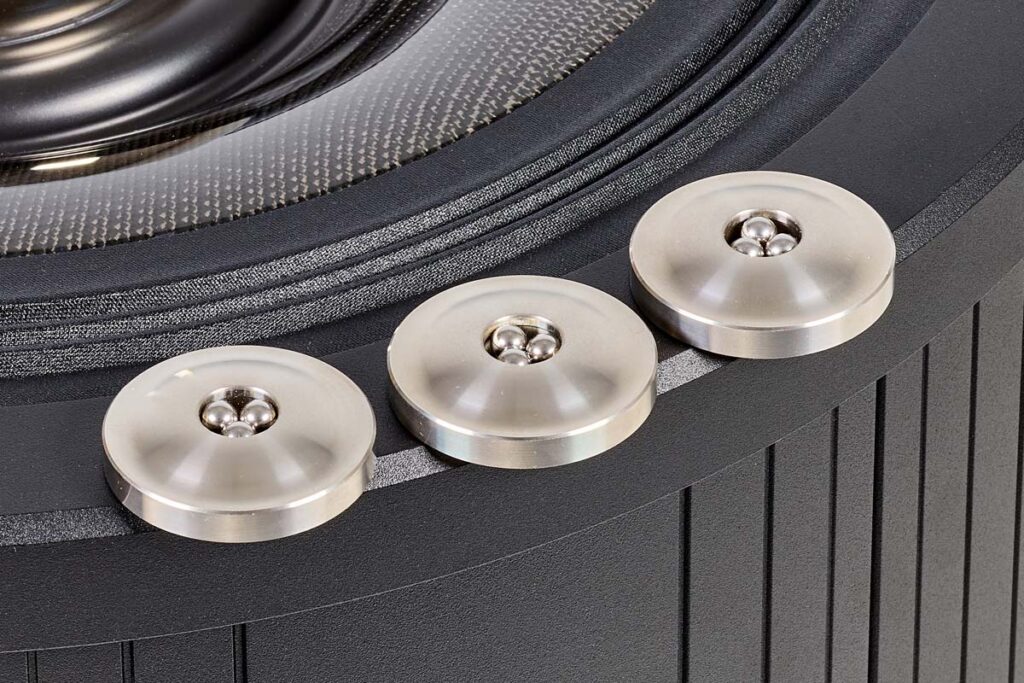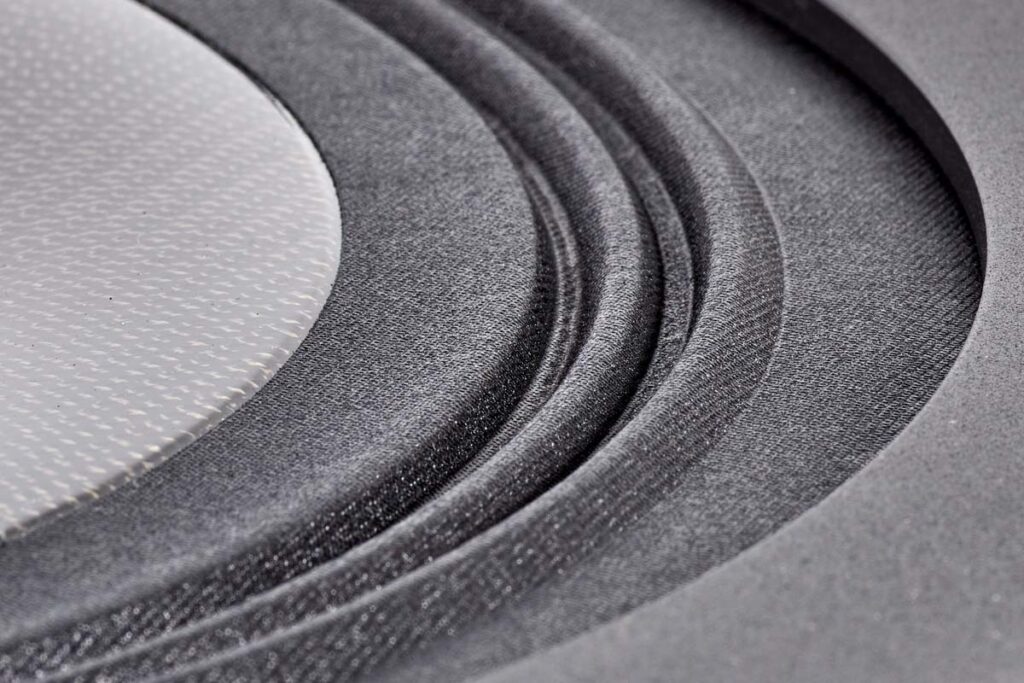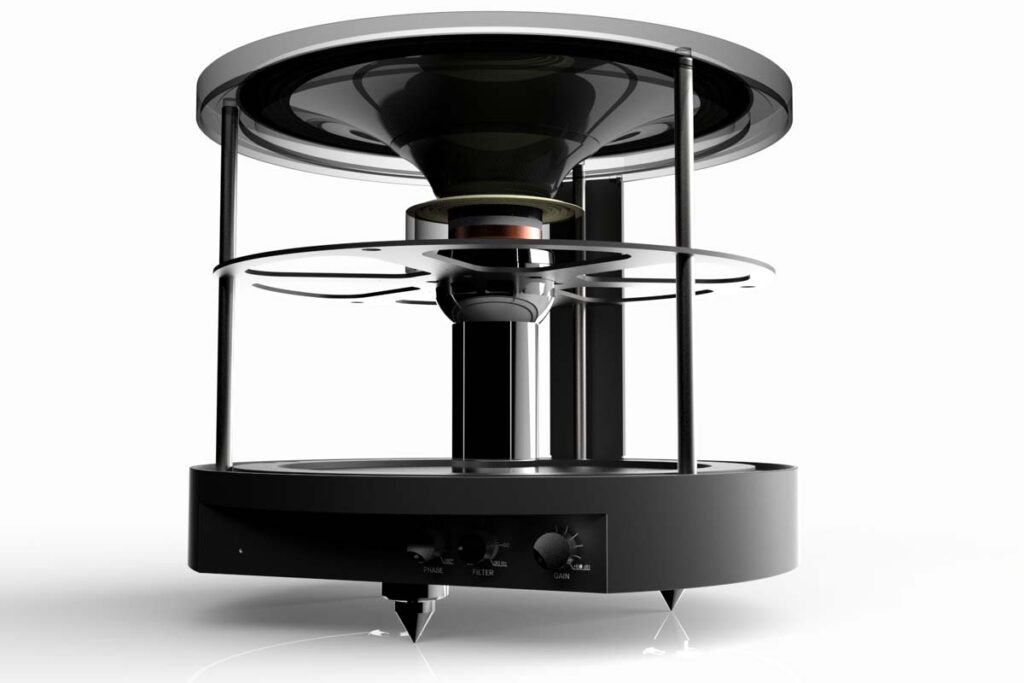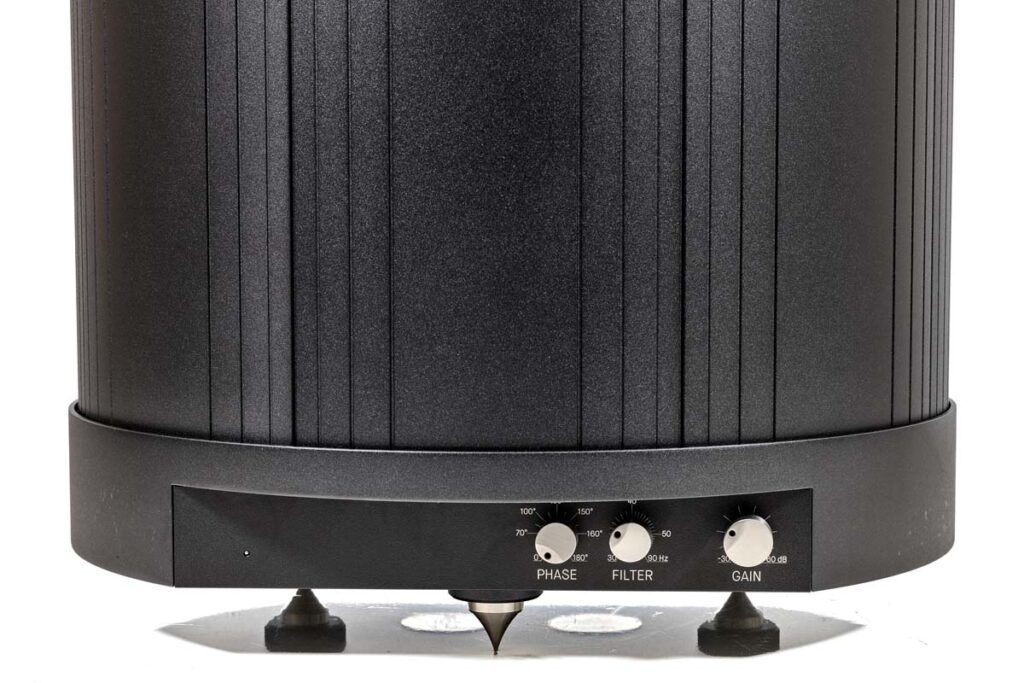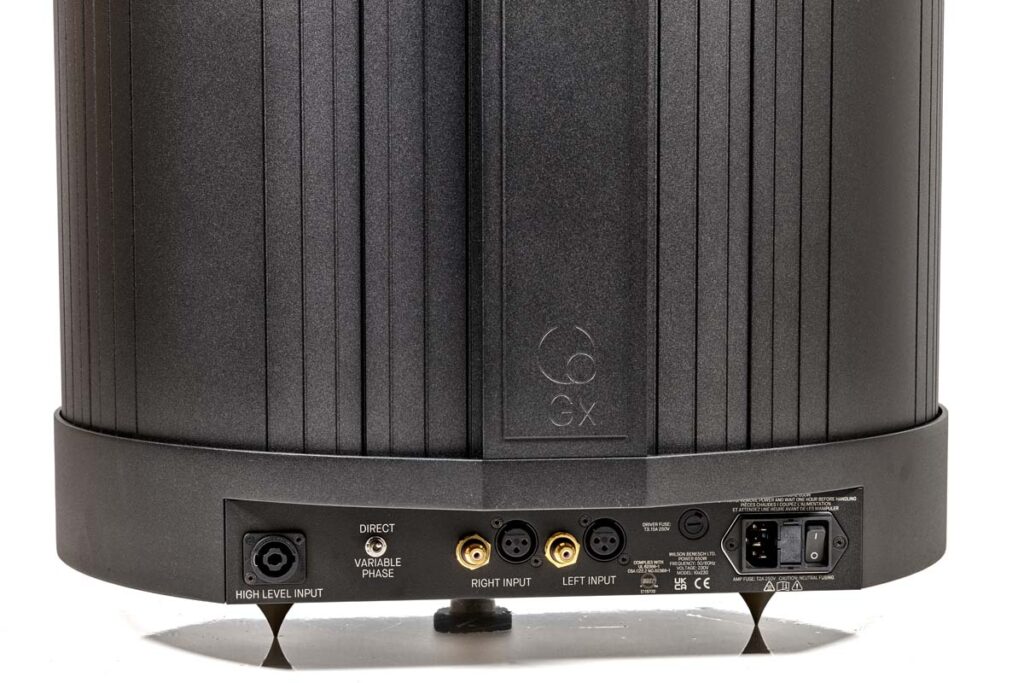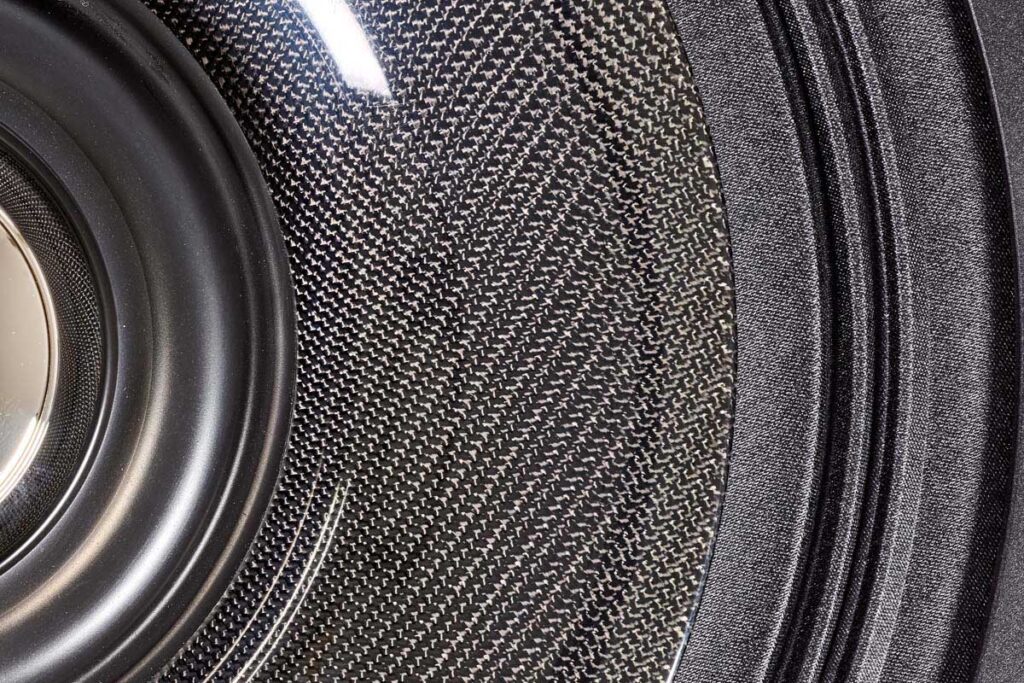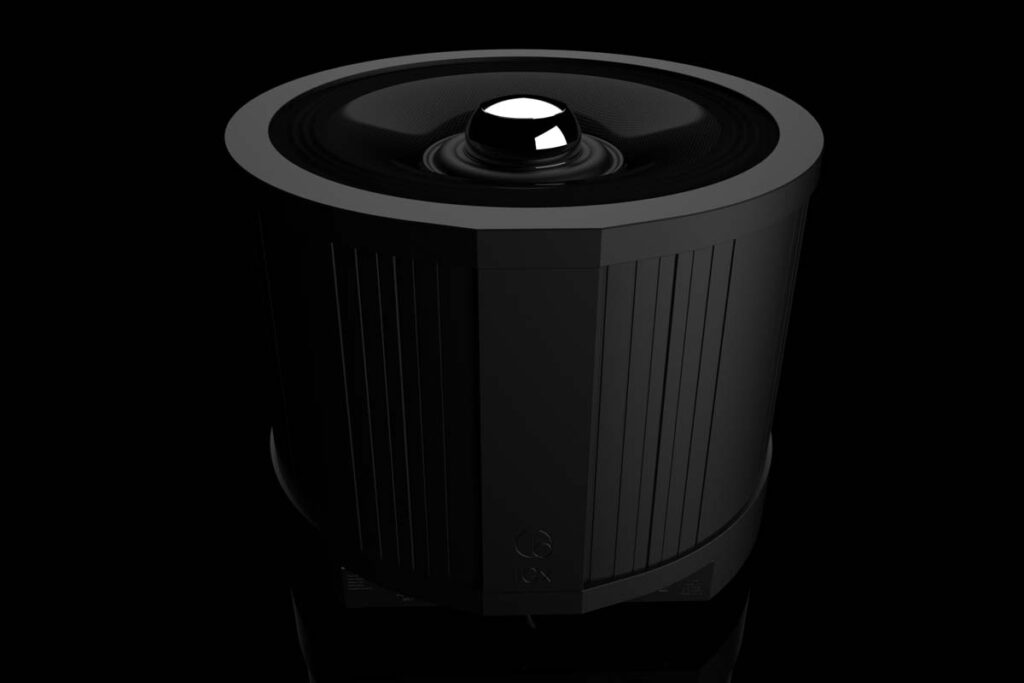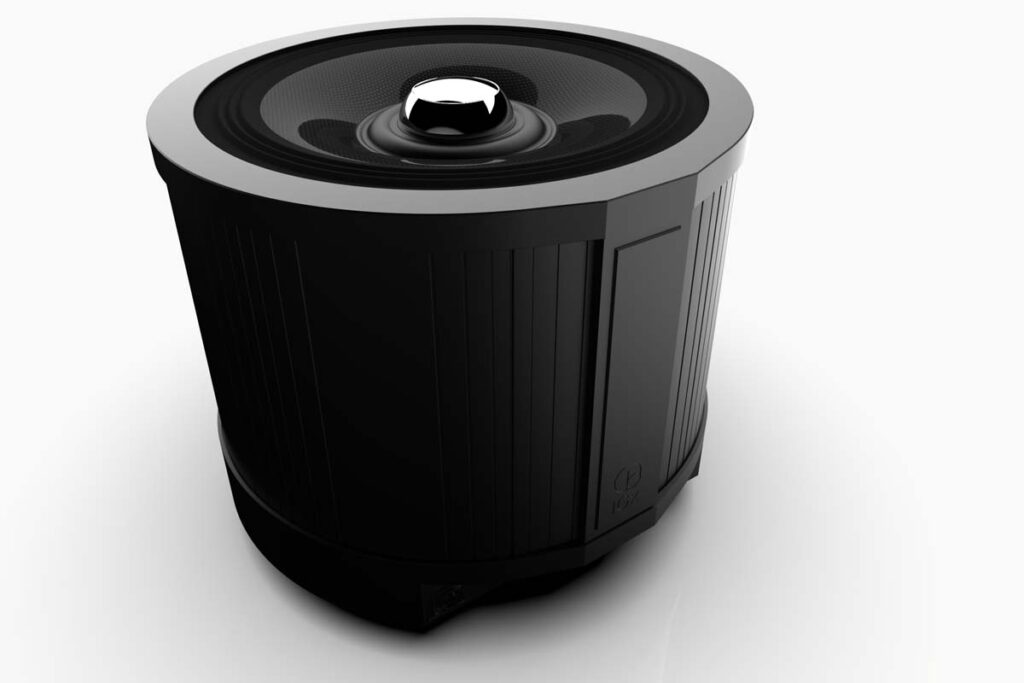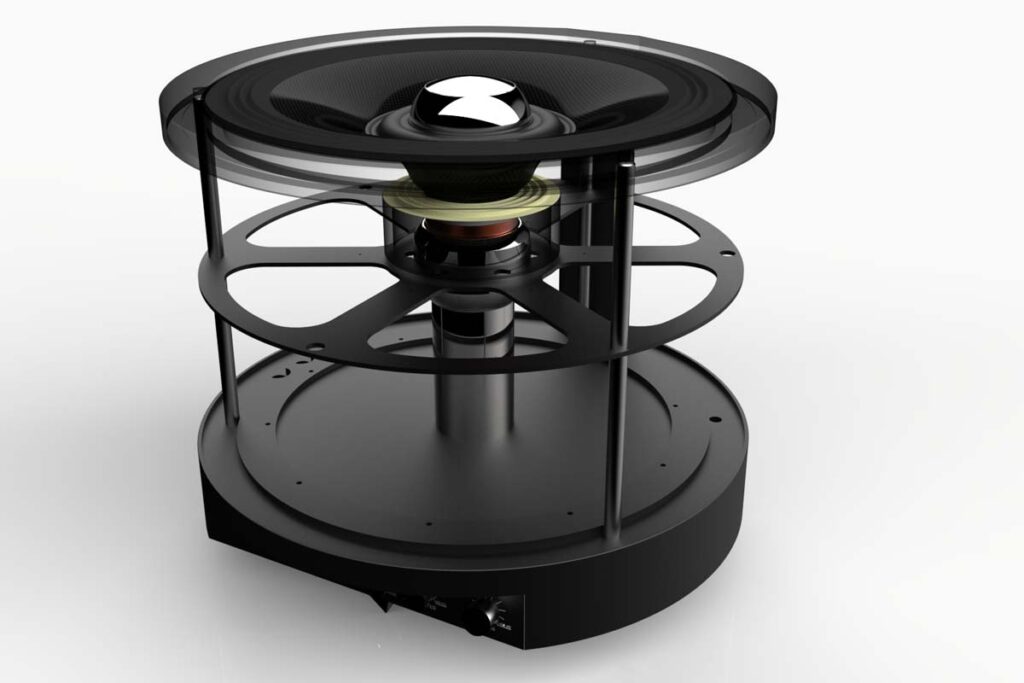Wilson Benesch is a manufacturer of extremes. In their quest for sonic perfection, the British are not prepared to make even the slightest compromise. The new IGx active subwoofer is no exception: join us on a musical journey with a “room opener” in a class of its own.
The history of the subwoofer is full of misunderstandings. For the majority of bass enthusiasts, it’s primarily about the noticeable increase in low-frequency energy, a discipline that most active hi-fi loudspeakers aren’t really good at – because they don’t even try. For pure oomph, you should look around in the home theater department. Or look for woofers that can at least be switched between explicit “movie” and “music” modes. Excellent and correspondingly exclusive machines such as the Wilson Benesch IGx are about something completely different. Although the “Infrasonic Generator” extends the spectrum of even large floorstanding loudspeakers down to the abyssal low end of 12 Hertz, its developers moved proverbial mountains to ensure that it achieves this as homogeneously, discreetly and naturally as if it were part of its playing partners. Or to put it another way: if it is set up, filtered and leveled correctly, you won’t even notice that it is there.
Such understatement is not a contradiction to the IGx’s upmarket five-figure price tag, but rather a confirmation of it. As with many thoroughbred technologies, the devil is in the toil of the last two to three meters of the journey. However, it is precisely these draining extra steps that separate an outstanding product from a very good one. The fact that such an elaborately crafted and technically sophisticated woofer comes from a family business in central England is a miracle that the two owners themselves are sometimes unable to comprehend. Developer Craig Milnes runs the Sheffield-based company together with his wife and managing director Christina. Their son Luke is now also on board and is primarily responsible for marketing and international affairs. Since the early days of their company, the Milnes have gone their own way in terms of technology. If you would like to find out more, I recommend our report from FIDELITY No. 71, which you can find here. For the IGx, for example, the British are using a handful of materials and concepts – more on this in a moment – that make the subw… pardon, infrasound generator look more like an Ariane rocket.
The central question must, of course, be: What’s the point? On paper, an active basement ghost doesn’t pose any excessive challenges. Because it only reproduces the lowest frequencies, its driver is relatively trivial. Since bass requires a lot of energy, it naturally needs appropriate power, but even that is no longer a headache in the age of Class D. The cabinet, well, it should be as rigid as possible and not too light so that the woofer doesn’t take any unwanted hikes. These three aspects can be used to describe what feels like 90 percent of the market. But, as I said, Craig Milnes is aiming for the last few ounces of feasibility with his concept. After all, the in-house playing partners carry names like Eminence or Resolution 3Zero. And they are traded at prices that would buy you many an exotic car.
The central role in the IGx concept naturally falls to the driver. The trumpet-shaped cone has a diameter of 18 inches, a good 45 centimeters. Although it only has one chassis, the woofer is capable of moving large volumes of air. But you don’t have to be a physicist to understand the stresses to which such a driver is exposed. Particularly towards their outer edges, large cones tend to deform, which can act like integrated distortion pedals in the flow of sound (especially at higher levels). As a countermeasure, Craig Milnes resorted to a technical trick that he developed together with a British manufacturer: a highly complex carbon mesh of the kind used in propellers or aircraft landing gear, among other things. During our visit to Sheffield, we were able to experience for ourselves how difficult it is to process the fabric into organic shapes. As a rule, it is cut into smaller segments and later baked into a larger whole, which of course makes no sense for a driver that is to play as homogeneously and coherently as possible. How fortunate, then, that the British engineers came up with the idea of marrying it with a material called “polyethylene terephthalate”. Before you get your tongue tied trying to pronounce it, let’s stick with the trivial name PET. Admittedly, as used in the IGx, the plastic has little in common with its humble use in water bottles. A German manufacturer transforms the material into bright white PET threads, then weaves them into a wafer-thin fabric that is finally bonded with the aforementioned carbon materials – and as if by magic, the sandwich can be used to line complex, organic shapes without interruption before it goes into the oven to be fixed. The result is a driver that weighs just 110 grams but can easily withstand the force of a 90-kg person standing on it. That’s more than 800 times its own weight. And if that doesn’t seem like much to you, try talking to a paper cone of the same size. This ingenious composite material, which is also used in other British models, is produced exclusively for Wilson Benesch in comparatively small quantities. Each individual roll of this magical material costs the equivalent of a small car.
A 16-kilo steel rod called IGx CORE, which protrudes visibly from the center of the woofer, provides the appropriate transmission of the drive force. The reason for this unconventional design is the two drive coils of the infrasonic generator. A voice coil and a huge neodymium magnet are located under the visible spherical cap. If you were to peel the carbon eighteen-incher out of its housing, you would see that there is another drive directly under its conical funnel. The two coils are wired in antiphase and work in a push-pull manner, which ensures particularly clean power transmission. But the unique concept has another advantage: if you gently push the driver inwards by hand, it offers noticeable resistance. It seems as if the eighteen-incher is suspended incredibly firmly, which is of course good for the immovable centering of the driver. However, unlike most chassis, the supporting surround proves to be amazingly soft and compliant on closer inspection. The woofer is primarily held, stabilized and protected from unwanted resonance during operation by its centering spider and the two magnets via the extended voice coil. At the outer edge, where load and distortion are greatest, the soft surround allows it to run unrestrained and without deformation.
The cabinet design goes to great lengths to conceal the effort put into it. Basically, the IGx sits in an enclosure made from a few aluminum segments. But these are uncompromisingly interlocked and coordinated. The driver itself along with its surround is glued into an aluminum ring, which rests on three shells that form a perfect circle. Fine longitudinal milling lends the outer walls visual finesse and acts as a wave breaker to ensure that vibrations cannot freely circulate around the housing. The base is a solid block milled from 50 kilograms of light alloy and provides sufficient space for the electronics as well as all the necessary inputs and controls. To stabilize the housing, Wilson Benesch bolts three 13-millimetre rods between the lid and base, pulling the two together ultra-tightly. A ring of eight millimetre thick aluminum running around the middle dampens the metal rods. The result is a simple-looking yet incredibly stable body that offers twice the volume of its predecessor on the same footprint of a torus – and still behaves acoustically like a solid block of steel.
The manufacturer uses a solid Class D drive with 100 watts of continuous and up to 500 watts of impulse power – more than enough for the requirements. Naturally, the amplifier operates with extremely low distortion and hardly swallows more than 10 to 15 watts when idling. The IGx can be connected in three ways: two-channel via XLR or RCA or via a special “High Level Input”. The latter is designed as a Speakon socket and enables direct connection to a stereo power amplifier. There are two practical applications for this: If you are not to trust the integrated power plant, you could add your own “flavor” via the external power amplifier. More importantly, however – and Wilson Benesch emphasizes this explicitly – the IGx can be operated in line with the loudspeakers in this way, as the signal that both receive is then absolutely identical. If, for example, the amplifier cannot cope with some peculiarity of the loudspeaker, the IGx will also pick up on this. Sounds strange at first, but the interaction between woofer and loudspeaker can appear even more homogeneous this way.
At the time of testing, however, we had the Accuphase P-7500 and Burmester’s 216 to hand, both of which coped exceptionally well with review candidates such as the Wilson Audio Sasha V or the Aspen FR10 from PS Audio. We briefly tried out the High Level Input and then stuck with the stereo RCA connection, simply because it felt the most “familiar”. To come straight to the point: The IGx impressed us right out of the gate! Never before have we had a woofer in our listening room that didn’t have any misadjustments. The superb filter network works so smoothly from 30 to 90 Hertz that the Infrasonic Generator can be tuned to the speaker in just a few simple steps. The level control is tuned from -30 to +60 dB so that the woofer can disappear acoustically or come to the fore without ever becoming too present or annoying. The phase is continuously adjustable from 0 to 180 degrees and is subject to the usual problem: the subwoofer should be positioned exactly in line between the speakers – then you can simply leave the phase alone. This control only serves to compensate for placement errors.
The Wilson Audio itself reaches down to around 33 Hertz, so it doesn’t really need a woofer. We therefore adjusted the level of the IGx to a moderate 0 dB and let it play along at what felt like idle. This actually resulted in a subtle gain in liveliness, stage size and plasticity, which we clearly felt after just a few words of Suzanne Vega’s “Tom’s Diner”. If you switch off the woofer after a few minutes and restart the track, the previously subtle gain suddenly turns into a huge loss. Although the Sasha produces and reproduces music excellently on its own, it seemed unusually dull and two-dimensional after getting used to the IGx. The woofer presented itself in a similar and yet completely different way in combination with PS Audio’s “small” floorstanding speaker. The FR10 is built on the rather slim side. Nevertheless, we did not use the IGx to make it sound more “voluminous” after a few attempts. A crossover frequency of 58 Hertz at a slightly raised +10 dB proved to be optimal. This only added an imperceptible amount of low bass to the speaker. With a comparable effect: the reproduction became more palpable, more vivid and suddenly took on more comprehensible dimensions in the listening room without the character of the loudspeaker changing noticeably. The bass performance of the IGx is therefore exactly what the name of the wonderfully uncomplicated woofer promises: infrasonic, i.e. barely audible. However, the effect of the luxury basement ghost on the homogeneity and plasticity of voices, instruments or imaging is out of this world.
Accompanying Equipment
CD player: Audio Note CD 3.1x/II, Accuphase DP-560 | Network player/DAC: Lumin X1, Aavik SD-880 | Preamplifier: Accuphase C-2300 | Integrated amplifier: Aavik I-580 | Power amplifier: Luxman M-10x, Accuphase P-7500, Burmester 216 | Speakers: Wilson Audio Sasha V, PS Audio FR10, Gryphon Eos 5 | Rack: Finite Elemente, Solidsteel, Bassocontinuo
Wilson Benesch IGx subwoofer
Concept: sealed-box active subwoofer with dual coil drive and deliberately discreet amplifier tuning | Connections: 2 x XLR (balanced), 2 x RCA (unbalanced), high level input (Speakon, 3 m adapter cable included) | Amplifier power (4 Ω): 100 W continuous power, 500 W pulse power | Level adjustment: -30 dB to +60 dB | Frequency response (-3 dB): 12 Hz to 90 Hz | Input impedance: 10 kΩ (RCA/XLR), 180 kΩ (Speakon) | Distortion (@1 watt): < 0,04 % | Crossover: 30 Hz to 90 Hz | Power consumption: 10 to 15 W (idle), max. 650 W | Finishes: Aluminum, black coated | Weight: 54 kg | Dimensions (diameter/height): 51/43 cm | Warranty period: 3 years | Price: around 33 000 €
IAD
Johann-Georg-Halske-Straße 11
41352 Korschenbroich
Phone +49 800 2345007
service@iad-gmbh.de

